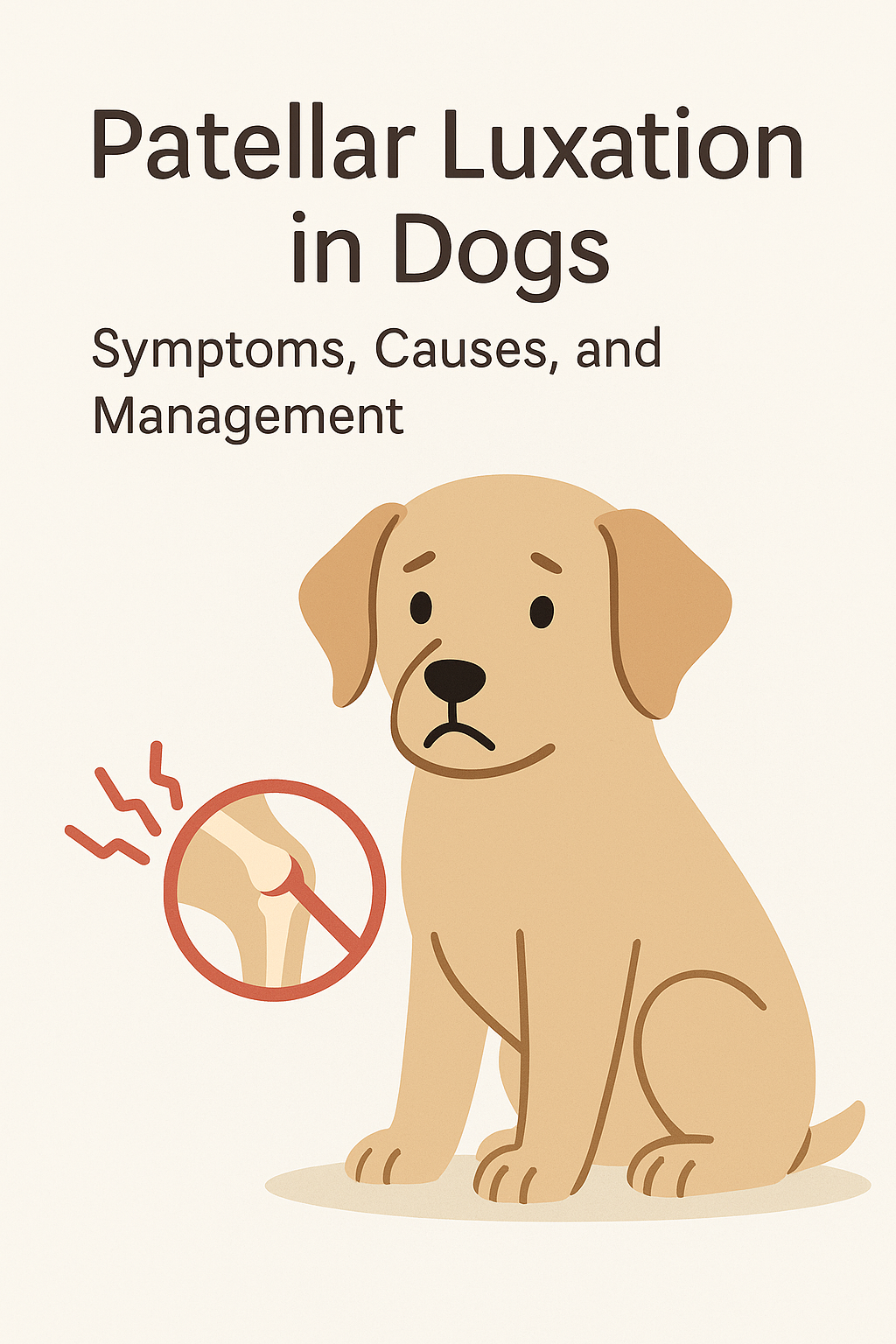
🦴 Patellar Luxation in Dogs – Symptoms, Causes, and Management Guide
🦴 Patellar Luxation in Dogs – Symptoms, Causes, and Management Guide
What Is Patellar Luxation in Dogs?
Patellar luxation occurs when the kneecap (patella) moves out of its normal position in a dog’s knee joint.
It is especially common in small dog breeds but can affect dogs of all sizes.
In the early stages, it may only cause a slight limp,
but if left untreated, it can lead to severe pain, arthritis, and permanent limb deformities.
Early detection and proper management are crucial to prevent long-term complications.
Symptoms of Patellar Luxation in Dogs
-
Lifting one hind leg intermittently while walking or running
-
Limping or walking with an abnormal gait
-
Frequent licking of the knee area or sensitivity to touch
-
Sudden stopping and stretching of the hind leg
-
Chronic pain and reluctance to move in severe cases
Common Causes of Patellar Luxation
-
Genetic predisposition: Especially common in small breeds like Poodles, Chihuahuas, and Yorkshire Terriers
-
Congenital skeletal abnormalities: Abnormal growth of the femur or tibia
-
Trauma or injury: Slips, falls, or hard landings after jumps
-
Obesity: Excess weight increases pressure on the joints
Grading System of Patellar Luxation
| Grade | Description |
|---|---|
| Grade 1 | Patella can be luxated manually, but returns to position naturally |
| Grade 2 | Occasional self-luxation and return; mild limping observed |
| Grade 3 | Patella remains luxated; can be manually repositioned |
| Grade 4 | Permanent luxation; cannot be repositioned; severe deformity present |
➔ Higher grades typically require surgical intervention.
How to Manage Patellar Luxation in Dogs
1. Weight Management
-
Maintain an ideal weight to reduce joint stress
-
Provide a high-protein, low-fat diet
2. Safe Living Environment
-
Install non-slip mats on slippery floors
-
Minimize jumping from high places (sofas, beds)
-
Limit stair use
3. Regular Moderate Exercise
-
Encourage short, controlled walks
-
Activities like swimming that avoid joint strain are recommended
4. Joint Supplements
-
Supplements containing glucosamine and chondroitin can support joint health
-
Omega-3 fatty acids help reduce inflammation
5. Surgical Consideration
-
Recommended for Grade 3 or higher, or if the dog is in severe pain
-
Consult with a veterinarian to assess surgical options
Importance of Early Detection and Routine Checkups
Early detection of patellar luxation in dogs can significantly improve the long-term outcome.
Regular veterinary checkups, even when your dog seems healthy, are essential for catching early signs of luxation before they progress.
Veterinarians can perform physical exams and, if needed, recommend X-rays to assess joint health.
When detected early, non-surgical interventions like weight control, physical therapy, and joint supplements can be more effective and delay or prevent the need for surgery.
Remember, being proactive about your dog's joint health can make a huge difference in their quality of life and mobility as they age.
Can Patellar Luxation Be Prevented?
Complete prevention is difficult, but you can significantly reduce the risk by:
-
Promoting appropriate exercise from a young age
-
Preventing obesity
-
Avoiding traumatic injuries
If you are adopting a small breed dog, it’s also important to check the parents’ health history.
🛒 Recommended Products for Managing Patellar Luxation
-
Non-slip dog mats for home
-
Joint-protective harnesses
-
Glucosamine and chondroitin supplements
👉 Explore our Dog Joint Care Collection
External Resource (DoFollow)
For more detailed information, refer to the AKC Guide on Patellar Luxation in Dogs.
Internal Resource
👉 Related article: Best Healthy Dog Treats for Small Breeds
🧩 Frequently Asked Questions (FAQ)
Q1. Can patellar luxation in dogs heal on its own?
A1. In mild cases (Grade 1 or 2), some temporary improvement may occur.
However, patellar luxation is generally a progressive condition that worsens without proper management.
Q2. When is surgery needed for patellar luxation?
A2. Surgery is typically recommended for Grade 3 or 4 luxations, or when the dog experiences severe pain or significant mobility issues.
Q3. How should I care for my dog after patellar luxation surgery?
A3. Post-surgery care includes restricted activity, rehabilitation exercises, and possibly physical therapy under veterinary guidance to ensure optimal recovery.

